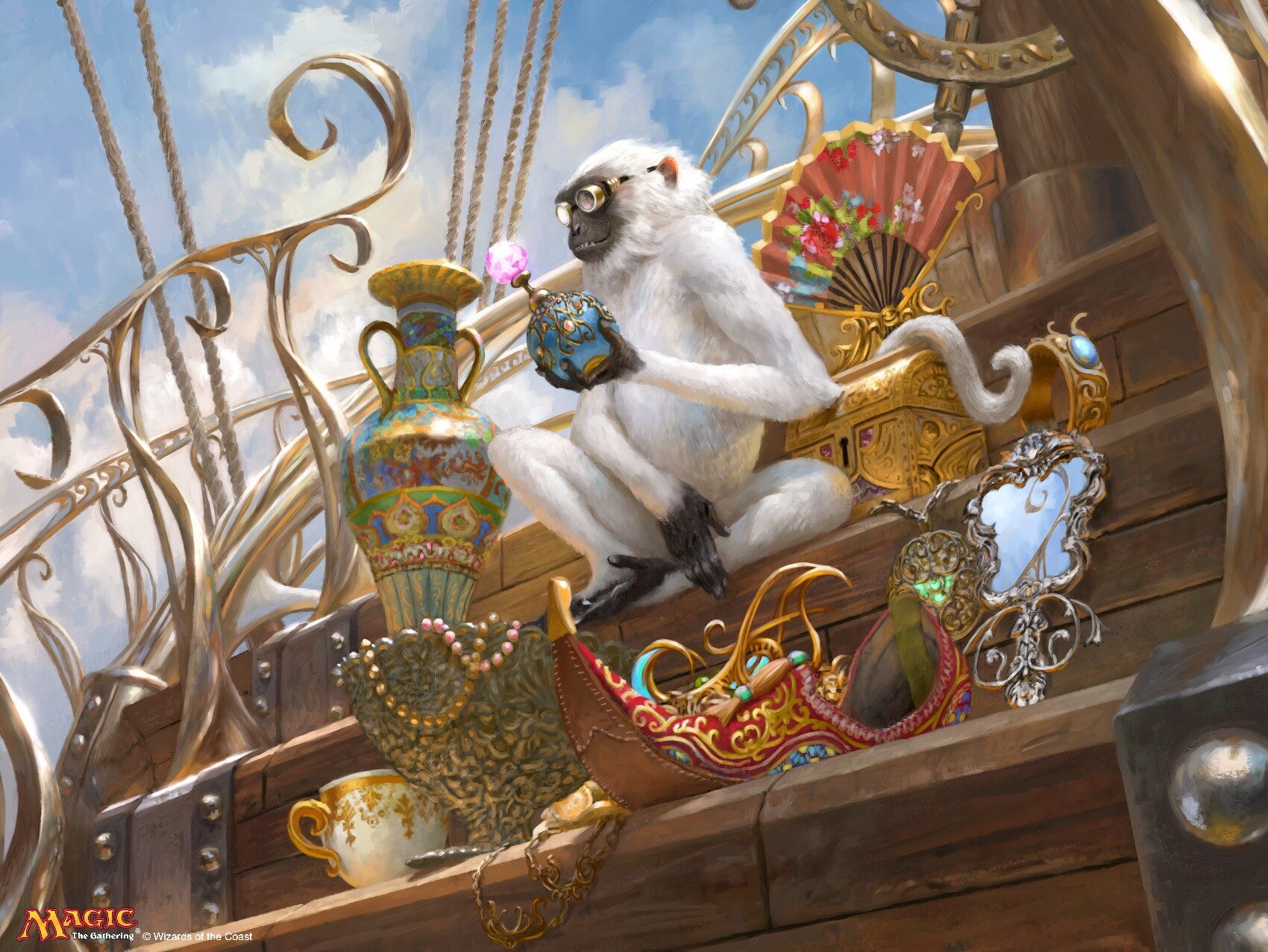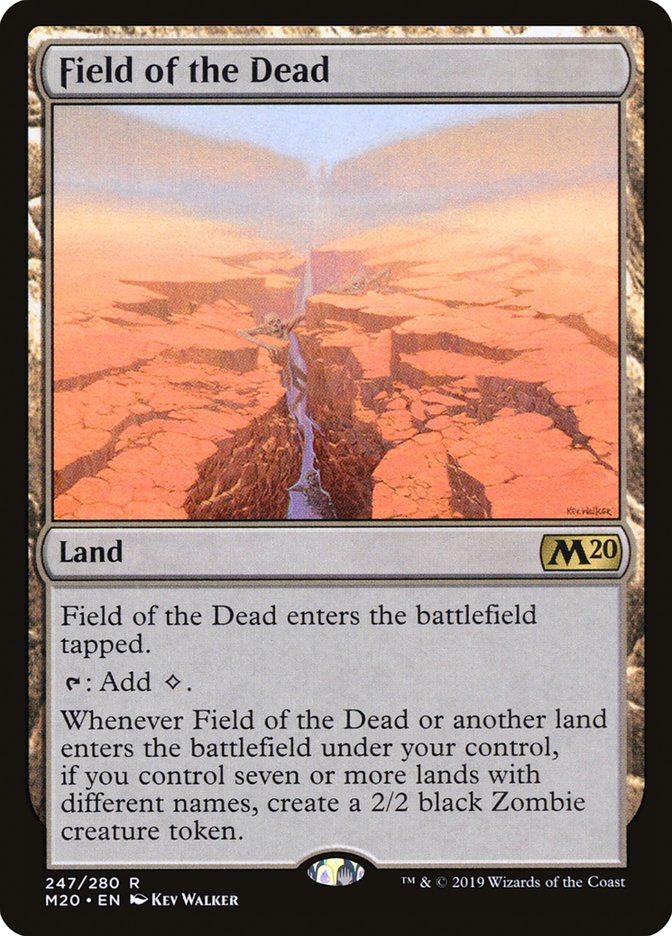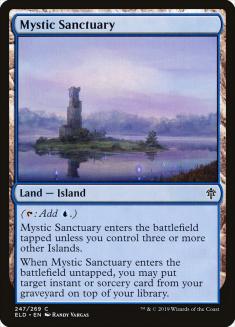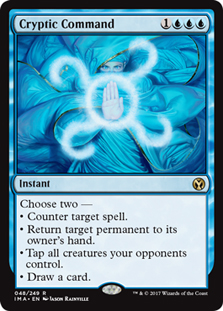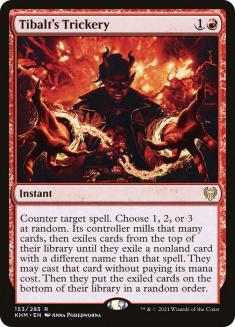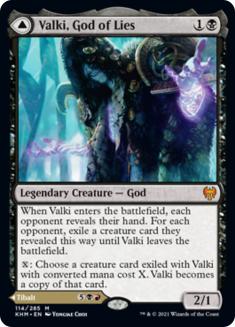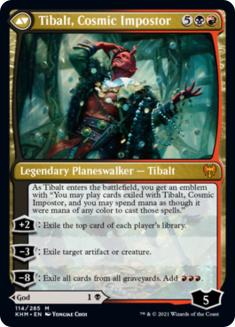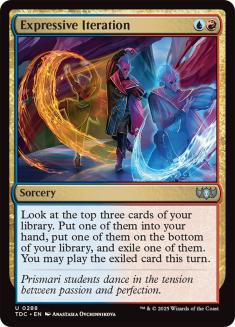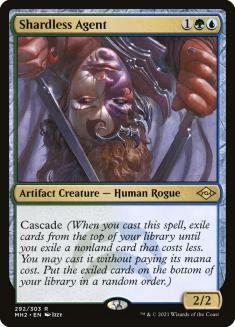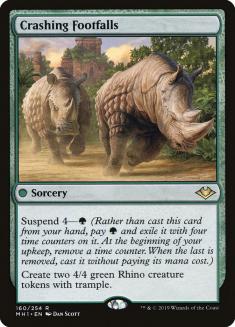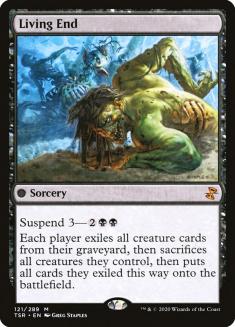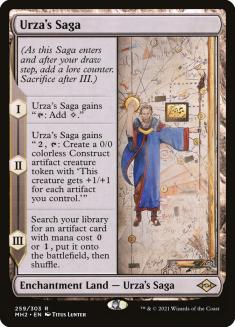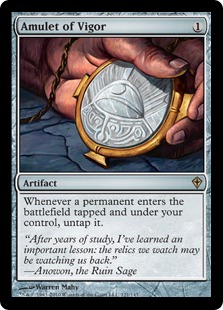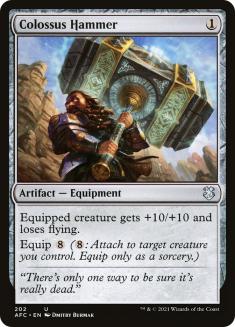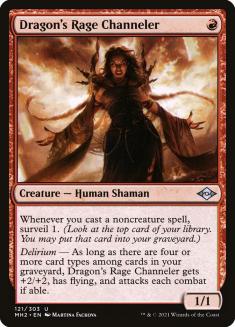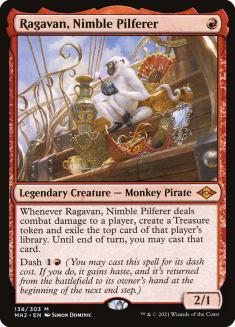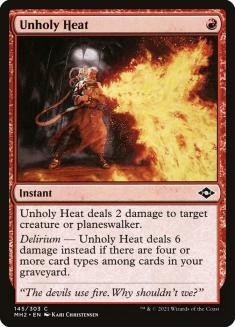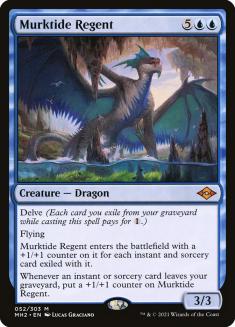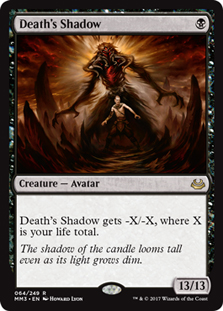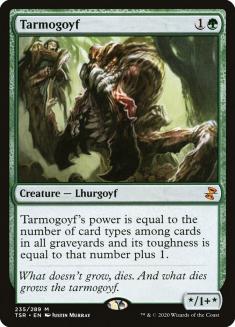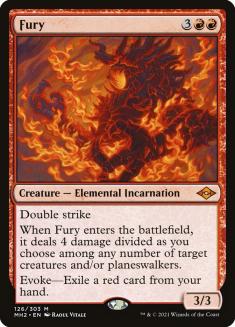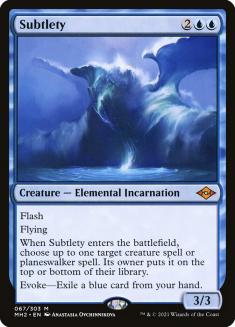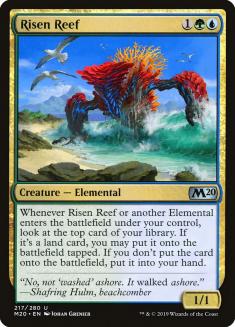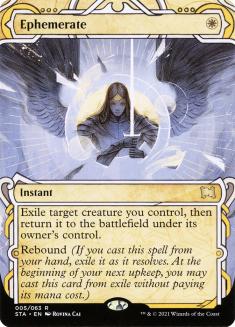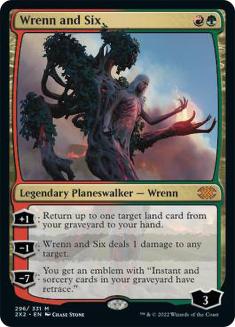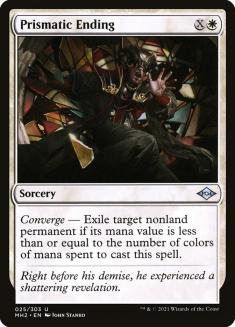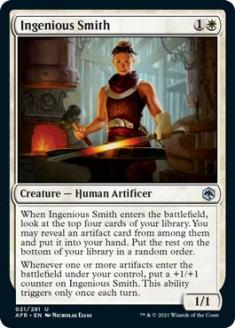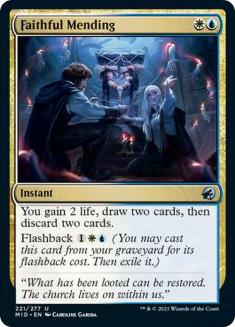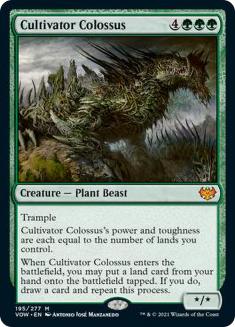Modern put every other format to shame with its transformation this year. Magic’s most popular Constructed format went through one of the most turbulent periods in its history, highlighting its structural flaws but also an impressive resilience.
The first Modern events of 2021 were a good summary of where the format was and a loud cry for help:
Creatures (5)
Planeswalkers (3)
Lands (28)
Spells (24)

Creatures (6)
Planeswalkers (8)
Lands (29)
Spells (17)

Modern had already been throttled by this trio for almost a year. As the calendar reset for 2021, no end was in sight. As in every other format, Uro was the best win condition you could hope for — largely because it was also the best mana ramp, card advantage engine, and stabilization tool all bundled in one card — and it had better support here than anywhere else.
Fetchlands not only made filling the graveyard for escape trivial but also teamed up with Uro to unlock Field of the Dead, as obnoxious for fair decks as it was in every format. If that weren’t enough, Mystic Sanctuary subsidized fetchlands even further; this interaction had triggered a round of bans that took down a format staple in Mox Opal due to the absurd dominance of Simic Urza, but Sanctuary itself was allowed to run rampant for another year. Modern Horizons 2 would have forced the issue once more; can you imagine a world where the Four-Colour Control decks had access to Counterspell or Prismatic Ending on demand?
Looping Cryptic Command with Mystic Sanctuary was another nigh-unbeatable yet easily accessible end-game for these decks. Cryptic Command feels like a dinosaur in the ruthlessly efficient format Modern has become now and a relic of simpler times, but by this point it had burned through any goodwill it accumulated over the previous decade. Things were so bad that Boil, an all-time ‘why does this even exist?’ head-scratcher from an era with different design sensibilities, was a popular sideboard card and the hero of the hour.
January also gave us an omen of things to come:
Creatures (16)
Lands (20)
Spells (24)

Orzhov Hammer (Lurrus) stormed the first weekend of Modern Challenges, making up half of this Top 8 with a mirror in the finals and becoming a fixture of Modern overnight. Before researching this article I had completely erased this from my memory; I remembered Hammer as a gimmick from last year that some bright spark recognized as the perfect home for Urza’s Saga. So it’s worth remembering that this was a popular strategy in the Magic Online streets at the start of the year. Between this Challenge and the release of Modern Horizons 2 it was never the most popular or successful deck and it would soon be overshadowed by other developments, so these early results are easily forgotten.
Creatures (17)
- 4 Death's Shadow
- 4 Monastery Swiftspear
- 4 Bomat Courier
- 1 Kroxa, Titan of Death's Hunger
- 4 Scourge of the Skyclaves
Lands (19)
Spells (24)

At the other end of the format, Rakdos Death’s Shadow (Lurrus) was fighting the good fight for fans of Thoughtseize and Lightning Bolt. The biggest complaint for this deck was a lack of good one-drops to support Scourge of the Skyclaves and it’s safe to say that’s not a problem any more; Bomat Courier can go back to a peaceful retirement.
With Kaldheim on the horizon, long-suffering Modern fans hoped for relevant new cards or a round of bans to shake up the format. The monkey’s paw duly twitched and delivered both:
Creatures (16)
- 4 Simian Spirit Guide
- 4 Emrakul, the Aeons Torn
- 4 Kozilek, Butcher of Truth
- 4 Ulamog, the Infinite Gyre
Lands (25)
Spells (19)

Tibalt’s Trickery is the most thematically chaotic card in the history of Magic. Every discussion of MTG Arena on Reddit or among the player base at large contained someone pleading for a Tibalt’s Trickery ban after a scarring experience in Best-of-One Standard or Historic, and the card took its talents to Modern for a tour that was tragically cut short. These decks were literal one-trick ponies — you could do exactly one thing and couldn’t even do that reliably, but the overall play experience was so miserable that Trickery was banned despite its unimpressive win rate and the obvious counterplay in the Modern card pool.
That was just Tibalt’s warm-up act:
Creatures (21)
- 4 Simian Spirit Guide
- 4 Magus of the Moon
- 3 Bloodbraid Elf
- 3 Seasoned Pyromancer
- 3 Bonecrusher Giant
- 4 Valki, God of Lies
Lands (25)
Spells (14)
Sideboard

Creatures (14)
Planeswalkers (4)
Lands (24)
Spells (18)

During Tibalt’s two-week reign of terror this was perhaps the most dominant deck in the history of Modern, a kaleidoscopic abomination that destroyed everything in its path. The final form of Five-Color Cascade was also the final form of the Uro Control decks, with the worst offenders there all appearing in this shell too.
Need a backup plan that shrugs off anti-cascade cards while dodging the cascade restriction? Uro is there for you as always. Is your opponent on exactly the same plan (as they should be, since this is the only viable strategy)? Field of the Dead is inevitably the card that breaks open the games where neither player can resolve Tibalt, Cosmic Impostor. If you can’t stick that first Tibalt, buy back your Violent Outburst with Mystic Sanctuary and try again!
After a Modern Challenge where eleven of the Top 16 were near-identical Five-Color Cascade lists, it was clear the format was broken beyond repair.
Luckily, a meteor was about to strike.
This announcement was a hard reset for every major Constructed format and Modern in particular. In addition to the biggest slate of bans since the post-Pro Tour Philadelphia cleanup, a rules change to the cascade mechanic neutered Tibalt (well in advance of Shardless Agent reviving other cascade decks and spawning new ones).
With the slate wiped clean, it was unclear Modern would go next. The answer presented itself the next weekend and was unsurprising in retrospect.
Creatures (34)
- 4 Birds of Paradise
- 4 Spike Feeder
- 4 Auriok Champion
- 4 Noble Hierarch
- 2 Archangel of Thune
- 2 Walking Ballista
- 4 Ranger-Captain of Eos
- 4 Heliod, Sun-Crowned
- 3 Conclave Mentor
- 3 Skyclave Apparition
Lands (22)
Spells (4)

The breakout of Selesnya Company was a good reminder that a deck that can succeed in a warped format can flourish in a sensible one. Michael Jacob took the deck to a Magic Online Championship Series (MOCS) win during the heyday of Uro and Omnath and it seemed perfectly positioned for this uncertain new world — the blue decks lost their best tools and the removal of Simian Spirit Guide was lethal collateral damage for the combo decks that could outrace infinite life or shrug it off entirely.
Heliod quickly became the official god of Modern despite its logistical issues on Magic Online (MTGO), where going off with Spike Feeder resulted in a painfully finite amount of life and often risked timing out (both issues that infamously arose during Jacob’s MOCS run). It’s still unclear how much more dominant the deck would have been in paper Modern if that were safe at that time.
Strixhaven seemed like a weak set for Modern at first, but it only takes one card to make a mark:
Expressive Iteration flew under the radar during preview season — only Ari Lax put it in his Top 5, and even then as a speculative card for a specific deck. Within weeks, Iteration had become the best card advantage spell in every format from Standard to Legacy and one of the main reasons to be in its colours.
Creatures (16)
Lands (18)
Spells (26)

In Modern the immediate beneficiary was Izzet Prowess, which was capable of fast kills but now had the ability to reload in the mid-game and chain prowess triggers together. Izzet Prowess joined Heliod in the top tier of Modern before becoming its undisputed top dog as we looked forward to Modern Horizons 2. The litmus tests for any Modern deck were very clear during this time: if your deck was weak to Lava Dart in any way or matched up poorly against Heliod, it needed a very good reason to exist.
After the experience of the first Modern Horizons, we all expected Modern Horizons 2 to turn the format on its head. Unlike last time, that was almost universally encouraged — the Heliod-Prowess battles were already stale and the format hadn’t regained a distinct identity after the round of bans in February. Nobody had a strong sentimental attachment to this snapshot of Modern and the impending earthquake was welcome.
Shardless Agent received a lot of hype as a versatile cascade card with potential in creature decks from Five-Color Humans to Domain Zoo, but its only lasting home was the obvious one. Living End saw some play before Modern Horizons 2 and also gained other tools like Grief, making it an easy deck to bet on early. Shardless Agent giving you two cascade spells in the Temur colours made Temur Crashcade a viable option for the first time and that shell built itself.
Urza’s Saga was the biggest prize in Modern Horizons 2 — whoever cracked that code first would earn the free wins that would come their way. Amulet Titan was a natural home and that deck came back to life almost entirely thanks to Urza’s Saga. I was lucky to win a Modern Challenge on that first weekend with Hardened Scales, but Orzhov Hammer (Lurrus) proved to be a better deck in that space and claimed the mantle of best Urza’s Saga deck and best deck overall.
Meanwhile, players who enjoy fighting fair were handsomely rewarded by a trio of red one-drops that fundamentally changed the face of Modern. Ragavan, Nimble Pilferer commands the highest price tag and has received the most backlash, but its impact on the format can’t be understood in isolation. A world where Ragavan can aim to accelerate out three-drops or four-drops is very different from the world we live in, where these base-red decks now have alarmingly compressed mana curves.
Ragavan is often your worst threat in a matchup or game state and drawing several copies can be a disaster, while extra Dragon’s Rage Channelers complement each other. Unholy Heat may be the most important of the three in terms of setting the parameters of the format; there’s much less incentive to play expensive threats now that they don’t dodge the common removal, cost more to cast than the premier threats in the interactive decks, and don’t beat those threats heads-up anyway…
This package settled into a range of shells. Izzet Midrange came together immediately, drawing on the historical dominance of similar decks in Legacy. A new iteration of Grixis Death’s Shadow first popped up as another aspiringspike creation exploring the synergy between Dress Down and Death’s Shadow or Kroxa, Titan of Death’s Hunger, but this proved to be just one intriguing feature of a fundamentally sound deck that’s now the most popular Ragavan deck and fighting Hammer for the title of best deck overall. You don’t have to play nonsense like Bomat Courier as extra one-drops for Scourge of the Skyclaves anymore — you don’t even have to play Scourge itself!
Despite its recent drop in popularity, ‘Zoomer Jund,’ aka Jund Midrange with all of these cards alongside Urza’s Saga and Wrenn and Six, may be the biggest development in this space. It’s not obvious that Urza’s Saga would work well in this shell, given your demanding coloured mana requirements on any given turn, but this deck is another useful reminder that the best cards these days are both strong and flexible, doing good work even when they seem out of place at first.
Force of Vigor and Force of Negation were two of the most important printings in the original Modern Horizons, permanently changing the terms of engagement of the format, and the evoke Elemental cycle proudly continues that tradition. Anyone pinning their hopes on a big turn involving a creature for the rest of Modern’s lifespan will have to respect the looming threat of Solitude, and every small creature deck off to a promising start has to fear Fury ending their whole career.
The quest to find the best home for these cards reinforces the lesson of Zoomer Jund. Four-Color Elementals (Kaheera) was an early breakout deck that used Ephemerate and Risen Reef to squeeze everything it could out of Fury and Solitude, burying any deck trying to contest the battlefield.
Ultimately, Four-Color Elementals (Kaheera) was supplanted by the much more nondescript Four-Color Blink (Yorion) decks that surrounded the Elementals with the generic good cards, getting enough mileage from them without the weaknesses of building around fragile tribal payoffs. Ephemerate sticks around in small numbers, usually alongside Eternal Witness; it becomes simply one more ‘good card’ that gives you a unique end-game rather than a central focus of the deck.
After a Modern Horizons set, recalibrating your expectations for the average set takes some time. We’re back to the familiar rhythm of each set offering a handful of role-players and build-arounds as well as the occasional game-changer.
Where does Modern sit as we start 2022? Calling it Modern Horizons 2 Block Constructed is reductive but not wholly unfair; your deck either revolves around cards from this year or is forced to respect them properly. After months of constant churn, this iteration of Modern is starting to settle… for now. With Kamigawa: Neon Dynasty around the corner and a lot more to come in 2022, nobody can afford to be complacent.

